Subtotal: $
Checkout-

From “In the Holy Nativity of Our Lord”
-

Digging Deeper: Issue 23
-

Beneath the Tree of Life
-

Sidewalk Ballet
-

The Eternal People
-

Robert Hayden’s “Those Winter Sundays”
-

The Pilgrim City
-

Not Just Personal
-

Editors’ Picks Issue 23
-

Madeleine Delbrêl
-

Covering the Cover: In Search of a City
-

Urban Series (Neighborhood)
-

In Search of a City
-

Readers Respond: Issue 23
-

Family and Friends: Issue 23
-

One Inch off the Ground
-

Re-Mapping Belfast
-

Serving Kings
-

Up Hill
-

City of Bones, City of Graces
-

Small Acts of Grace
-

In the Valley of Lemons
-

City of Clubs

Save Your Sympathy
A review of This City Is Killing Me: Community Trauma and Toxic Stress in Urban America by Jonathan Foiles
By John Thornton Jr.
January 5, 2020
If “the personal is political,” then so is the psychological. That was the discovery of Jonathan Foiles, a therapist at a mental health clinic in Chicago. When in training to become a social worker, he found that his favorite aspect of the job was helping homeless clients – so when, in graduate school, he had to choose between a mental health and a policy track, he picked the one that seemed to offer that same individualized opportunity to make a difference.
But in his years of experience at the clinic, he came to realize that this focus on individuals can obscure clear thinking about the historical and political conditions that harm people not only physically but also mentally and psychologically. As he puts it, “We diagnose individuals, not cultures or neighborhoods, with depression.” His new book – called, in an apparent nod to Chicago bluesmaster Dusty Brown, This City Is Killing Me – is his attempt to bring the two tracks together.
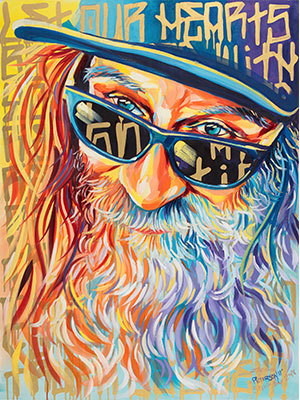
Stevie
Images reproduced by permission from Brian Peterson / facesofsantaana.com
Foiles wants readers to see the ways in which mental illness resembles other illnesses: outside factors matter. Just as contaminated water increases the risk of cancer, the instability of unsafe housing can increase the risk of depression, anxiety, or post-traumatic stress disorder. When dealing with the hardships of life, family breakdowns, assaults, homelessness, or addiction, it matters whom you go home to and also where you live, why you live there, who profits off it, and who makes decisions about your home’s value or lack thereof. Education matters, and so does the quality of the school; the kids and parents who rely on that school are usually the least able to determine its quality or whether it stays open.
In each chapter of the book, Foiles writes about his work with an individual client. Jacqueline, his first transgender patient, struggles with borderline personality disorder while dealing with social rejection and the habitual dangers transgender people face. A single mother named Frida had her children removed from her care by the Department of Child and Family Services (DCFS) for neglect. Robert suffers with PTSD after an abusive upbringing in a dangerous and dilapidated low-income housing complex. Luis hoards and demonstrates obsessive behaviors driven by fear of loss. Anthony deals with the pain of losing his teenage son to gun violence.
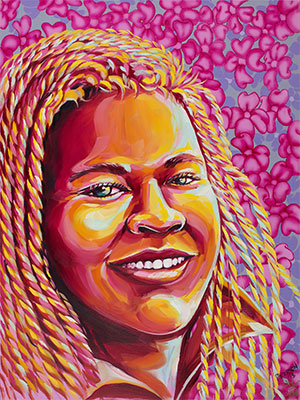
Ruby
Foiles is careful not to reduce his clients and their suffering strictly to the political; his respect for people as individuals shines through in his writing. While telling their stories, he pulls back to give a brief history of one of the material injustices he believes contributed to their need for mental health services. Jacqueline bounces from home to home while waiting to receive Social Security disability insurance. Frida, who never received the support that could have helped her take care of her children effectively, faces a confusing bureaucratic labyrinth in the DCFS, and the social workers assigned to her case frequently burn out only to be replaced by others with far too great a caseload. Robert not only has to deal with homelessness and the emotional scars of his childhood but also the lack of affordable housing in Chicago.
To emotionally protect himself from these compounding traumas, Robert has created a narrative of his childhood in which he was born a prince in Africa only to have kidnappers bring him to the United States. He harbors a deep suspicion of his own race and remains convinced that one of his neighbors wants to kill him. Foiles pieces together Robert’s background: he grew up in the Cabrini-Green housing project in Chicago, one of the most dangerously violent before the city tore it down. In addition to the distress induced by this surrounding, he also believes that Robert faced a good deal of abuse in his childhood. As city services go, Robert fell through all the cracks.
“It says something about the soul of a city that our leaders are willing to rob people of their homes to replace them with businesses.” Jonathan Foiles
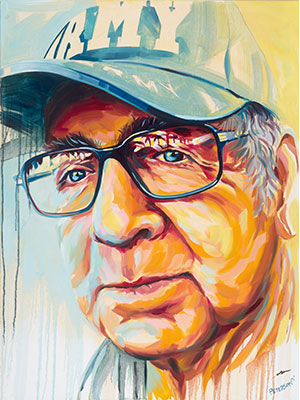
Ben
Foiles takes this opportunity to tell the story of Cabrini-Green. He writes of its construction after World War II, its delicate balance between white and black that existed for years and eventually tipped as a result of white flight and closing factories. As the percentage of black residents rose, the average income dipped. Repairs stopped. Crime escalated. Even as the problems persisted, people wanted to live there, as Chicago, like pretty much all American cities, didn’t have enough affordable housing. Eventually the city closed Cabrini-Green as part of the Chicago Housing Authority’s 2000 Plan for Transformation. At the time, the mayor promised that the plan included provisions for the residents of low-income housing to transition into mixed-income residences. As of 2017, Foiles notes, fewer than 8 percent of the displaced households had made this transition. Meanwhile, there is a nice, new Target where the housing complex used to be. “It says something about the soul of a city that our leaders are willing to literally rob people of their homes to replace them with bright, shiny businesses,” Foiles says.
While reading this chapter, I thought about the low-income housing directly across the street from a church I worked at in Winston-Salem, North Carolina. Constructed in the middle of downtown during the 1970s, Crystal Towers has about two hundred units reserved for elderly and disabled residents. The Housing Authority of Winston-Salem (HAWS) says the building needs about $7 million in repairs. The elevators often don’t work. It is not a good place to live, but it’s home for many who have lived there for years; its proximity to downtown means they can participate in the larger community without needing to drive, which many of them cannot.

John
Shortly before I left that church to start a new one, HAWS announced plans to sell Crystal Towers. With million-dollar condos just a block away, it became one of the most valuable pieces of property in the city, and because of federal regulations, HAWS can’t operate at a financial loss. The director of HAWS has repeatedly said that all of the residents of Crystal Towers will wind up in comparable, stable housing. My guess is that this will have roughly the success rate that Chicago had in transitioning Cabrini-Green residents to mixed-income housing.
The church I worked at had a few members who lived in Crystal Towers. Most of the membership lived in far more opulent settings. About once a week we’d have someone from across the street come to us in need of rent money. I tried to help when I could, using the church’s benevolence fund, but the scope of the problem far outweighed what just one church could do.
When looking down on someone, we can’t look up and see the forces that put them down there in the first place.
The standard approach to social action for both conservative and liberal Christians tends to center on sympathy, on sharing a feeling with another person suffering from poverty, racism, or other forms of inequality. I may not have the same experience as the residents of Crystal Towers, but I can find a time when I was rejected, a time when I worried about rent or paying my bills. This experience of sympathy, the thinking goes, will motivate me to reach out and help or push for change. Our church’s proximity to Crystal Towers should have produced a good deal of sympathy and thus a good bit of action. It obviously didn’t.

James and Charley
Foiles wants little to do with this attitude. He writes, “I do not want you to feel sorry for my clients. I don’t feel sorry for them, and I don’t think they would want anyone else’s sympathy either. Sympathy does nothing to change their situation in life.” We possess a wide range of ways to approach the suffering of others, from righteous indignation to tragic sorrow to humble admiration – but at bottom, these feelings do not matter. I think Foiles refuses sympathy because in situations of grave inequality, sympathy without condescension becomes incredibly difficult, if not impossible. When looking down on someone, we can’t look up and see the forces that put them down there in the first place – the forces that would just as soon have put us there had things been a little different. Foiles writes, “I want you to see them, to be forced to confront the impact that policy decisions have upon the lives of our cities’ poorest residents.”
Hannah Arendt once asked, “Should human beings be so shabby: that they are incapable of acting humanely unless spurred and as it were compelled by their own pain when they see others suffer?” I’m afraid the answer is that we are so shabby, that we are often incapable of acting humanely even when we do share another’s pain. We are so shabby, but we don’t have to be.
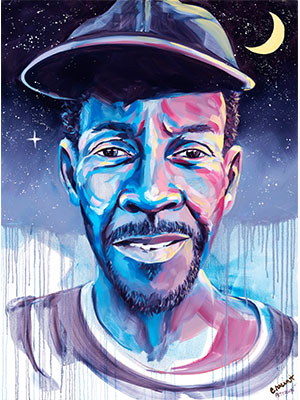
Crescent
Compassion compels us to look for something that goes beyond the divides we live with. But if the personal and psychological are political, so are friendship and solidarity. We do not find a bridge across our class, racial, and political divides merely by discovering a mutual feeling of sorrow, but also by speaking about the world as it is and working together to build a better one.
Foiles prods us to move away from our interior states of sympathy, just as his own trajectory took him out of his clients’ internal struggles to the facts of the world around them. A world of staggering inequality, in which condos can sell for millions of dollars to net a profit for an investor while people sleep on the sidewalks beneath. A world where the market economy seems to determine the value of every human life and everything we hold dear. A world in which people treat a government-owned building’s disrepair and the violence in and around it almost as a natural disaster, something that is no one’s fault and not the result of political decisions made by the powerful. He writes with a keen awareness that any Christian ought to have and that many often avoid: that while our struggles for happiness, community, peace of mind, and love draw us to something beyond the political, they also take us through it.
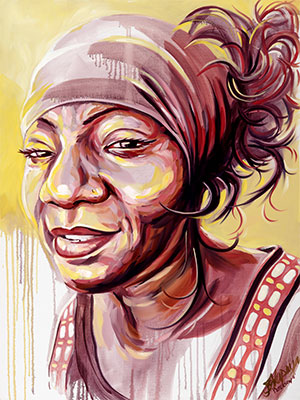
Bahati
As Foiles shows, the patchwork of services to help these people is not nearly enough. More than individual progress in therapy or piecemeal acts of charity, what is needed is a robust social welfare system that includes universal healthcare, guaranteed housing, well-funded public schools, and humane social services. Greater financial equality and far fewer guns in circulation would also help. In this alternate universe, many of Foiles’s patients – spared their precipitating trauma – might never have developed symptoms at all. Those who did, he notes, would have had access to care much sooner and more productively. This would not be a world free of mental illness, but it is the right scale at which to think about it.
To achieve these goals, Foiles gestures toward Martin Luther King Jr.’s Economic Bill of Rights and Poor People’s Campaign as ideas whose time has come again. All this sounds like a tall order, but as Christians we should aim even higher.
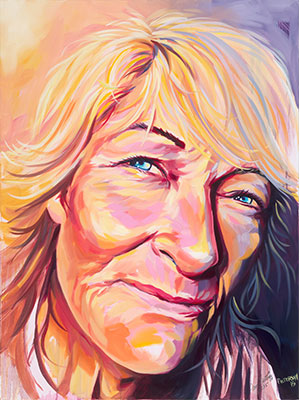
Pam
I find myself repeatedly drawn to the words of the socialist theologian Denys Turner: “Christianity will have proved its own truth in practice,” he writes in a 1975 article for New Blackfriars, “when and only when the structures of domination, oppression, and exploitation, the structures of lies, mystification, and hate, the machinery of war, of imperialism, of racism … have been wiped from the face of the earth.” Meanwhile, “Christ, love, community are present in the world, really present, in the form of their absence, in the form, that is, of a real possibility … of love, of emancipation, of community.” It is our responsibility to try to bring about that real possibility.
Of course, such a world may not come about in our lifetimes and Christians must continue living with the sufferings of Foiles’s clients – sufferings we have limited resources to address and that many of us share.
What little we can do is care for one another in ways that expose the destruction into which our politics and economic system press us. Even if such a church is only a “gnat on the back of an elephant,” as Eberhard Arnold, founder of the Bruderhof, once said, the calling remains. Heeding it means distributing our own goods, providing housing for the homeless, and caring for the elderly, and much more besides. But we shouldn’t do this as a way for the wealthy and powerful to outsource these responsibilities. We must do this because we can and should, and hopefully others will choose to let go of their idolatrous commitments and join us.
Learn more about the art at facesofsantaana.com
Already a subscriber? Sign in
Try 3 months of unlimited access. Start your FREE TRIAL today. Cancel anytime.

































